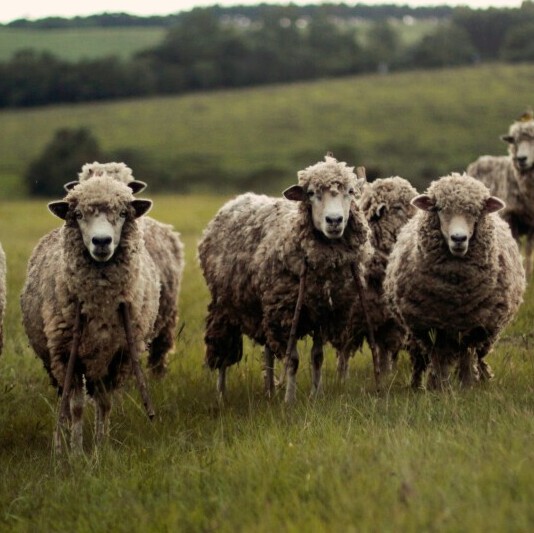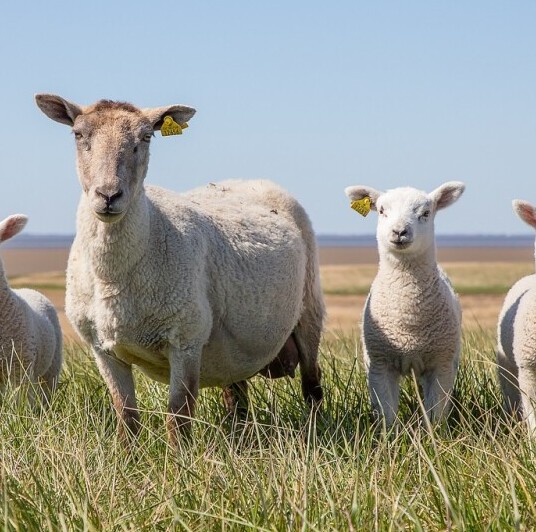Your cart is currently empty!
Internal Parasites In Sheep

Internal parasites in sheep are like those pesky tenants you just can’t evict without a fight. They’re a big deal in the world of sheep and goats because they affect how well your animals grow and reproduce. We’re talking about tiny critters that live inside your livestock, getting all the nutrients they need straight from your animals’ guts.
There are several types of these unwanted guests. Gastrointestinal nematodes (GIN) are probably the most notorious. These guys make their homes in the stomach or intestines and are responsible for problems like diarrhea, anemia, and even death if left unchecked. Then there’s liver flukes, which, as the name suggests, target the liver and make your animals sluggish and unproductive. Tapeworms are another concern, though they’re not as threatening as GIN or liver flukes, but they can still sap energy and growth from your critters.
What makes parasites tricky is their lifecycle. Most of them start as eggs in the animal dung, hatch into larvae, and crawl up grass blades to hitch a ride on sheep or goats. It’s like a bad movie on repeat if you’re not careful. Every time the animals graze, they could swallow larvae, continuing the cycle. Sounds frustrating, right?
The impact isn’t just on animal health either. Parasites steal nutrients straight from your livestock, leading to anemia, weight loss, and reduced fertility. If you’re not catching on quick, you’ll see less milk, fewer lambs or kids, and a general drop in productivity. Not exactly a small fry problem! Keeping those parasites in check is key to ensuring your animals stay strong and healthy, and your farm keeps buzzing with life and productivity.
Challenges Shepherds Face Due to Parasites
Being a shepherd sounds like a dream job, until parasites crash the party. These tiny troublemakers can hit the wallet hard, with costs adding up from vet bills, feed supplements, and productivity loss. When sheep or goats fall sick, it’s tough on both the farm’s finances and everyone’s spirit.

The first hurdle is diagnosing the parasites. Symptoms like weight loss or diarrhea are often hard to spot until the damage is already done. It’s like playing a constant game of catch-up, always reacting instead of preventing.
Then there’s the seasonal surge of parasites. Warmer weather might be awesome for picnics, but it’s also prime time for parasites. They thrive in moist, warm conditions, which means shepherds need to be on high alert during spring and summer.
Finally, the constant battle takes an emotional toll. Shepherds invest a lot of love and work into their herds. Watching livestock suffer, dealing with repeated outbreaks, and constantly managing parasite loads can be exhausting and demoralizing. You start to feel like you’re losing an unwinnable battle, but remember, every problem has its solution.
Effective Strategies to Combat Internal Parasites in Sheep
Taking charge of parasites involves some serious strategy. Prevention forms the backbone of any effective battle plan against these critters. The key? Rotational grazing. By moving sheep and goats to fresh pastures regularly, you disrupt the parasites’ lifecycle, kind of like pulling the plug on their party. Keep an eye on the pasture quality too – shorter grass makes it tougher for larvae to hang around.

Fecal egg count monitoring is another ace in your sleeve. Regularly checking the egg levels in the animals’ droppings tells you exactly how much of a problem you’re facing. This data helps in making well-informed decisions about when and what kind of treatment is needed, keeping you from using medicate unnecessarily.
Speaking of treatments, antiemetics play a critical role. They’re like the big guns in parasite management. But knowing the right type and correct dosage is crucial. Overdo it, and you might wipe out some parasites but leave behind resistant ones. Think of it as strategic warfare, where precision saves the day.
Don’t forget about integrated parasite management techniques. These blend different strategies, like combining grazing management with strategic dewarming. It’s about smarter, not harder, work. Bringing all these methods together ensures you tackle the problem from all angles, keeping those flock-wrecking parasites at bay while boosting the overall health of your herd.
Understanding and Mitigating Antiparasitic Resistance
Antiparasitic resistance is a real party crasher in the world of livestock management. It happens when parasites survive treatments that used to work, leaving you with superbugs that laugh in the face of your once-effective antiemetics. Spotting resistance early is vital. Keep an eye out for signs like your usual treatments not having the same effect. That’s a red flag indicating it’s time to switch tactics.
The consequences of resistance can be devastating. With ineffective treatments, parasites continue to wreak havoc on herd health, leading to even more significant financial strain. When the usual remedies stop working, productivity takes a nosedive, and farm operations start feeling the crunch.

Educating ourselves on responsible antiparasitic use is key. Correct dosages, targeted treatments based on fecal egg counts, and rotating between different classes of antiemetics instead of sticking to one can prevent resistance. It’s about playing it smart, thinking two steps ahead so that we’re not giving the parasites any chance to rise up stronger.
Good news is, innovation is on our side. Researchers are constantly working towards new solutions, like biological controls and improved medications. Embracing these advancements is crucial for shepherds. Keep an eye on the latest developments and incorporate new practices to lessen reliance on chemical treatments.
Ultimately, understanding and managing antiparasitic resistance isn’t just a science; it’s an ongoing practice of thoughtful and informed farming. With the right strategies, you can keep your animals healthy and your farm thriving, proving that when you guide the fight with knowledge, the battle is far from lost.
Tags:
Comments
2 responses to “Internal Parasites In Sheep”
This was an incredibly insightful read! Internal parasites in sheep truly are like those uninvited guests that refuse to leave, and your analogy made this complex issue so relatable. I especially appreciated the emphasis on rotational grazing as a preventive measure. It’s a simple yet highly effective way to break the parasite lifecycle.
The challenges you highlighted, like diagnosing early symptoms and dealing with seasonal outbreaks, really resonate. It must be so tough for shepherds to stay ahead of the curve, especially when weather conditions favor these parasites. Your breakdown of integrated parasite management strategies is fantastic. It’s encouraging to see how combining methods can make such a difference.
Overall, this article strikes a great balance between explaining the problem and offering practical, actionable solutions. Thanks for shedding light on such an important topic!
Thanks for the comment.
internal parasites have a physical and economic effect on a flock. Also, because they are a prey animal it’s sometimes hard to see when they are sick.
it’s not easy to keep on top of this problem. But we try to keep up

Leave a Reply